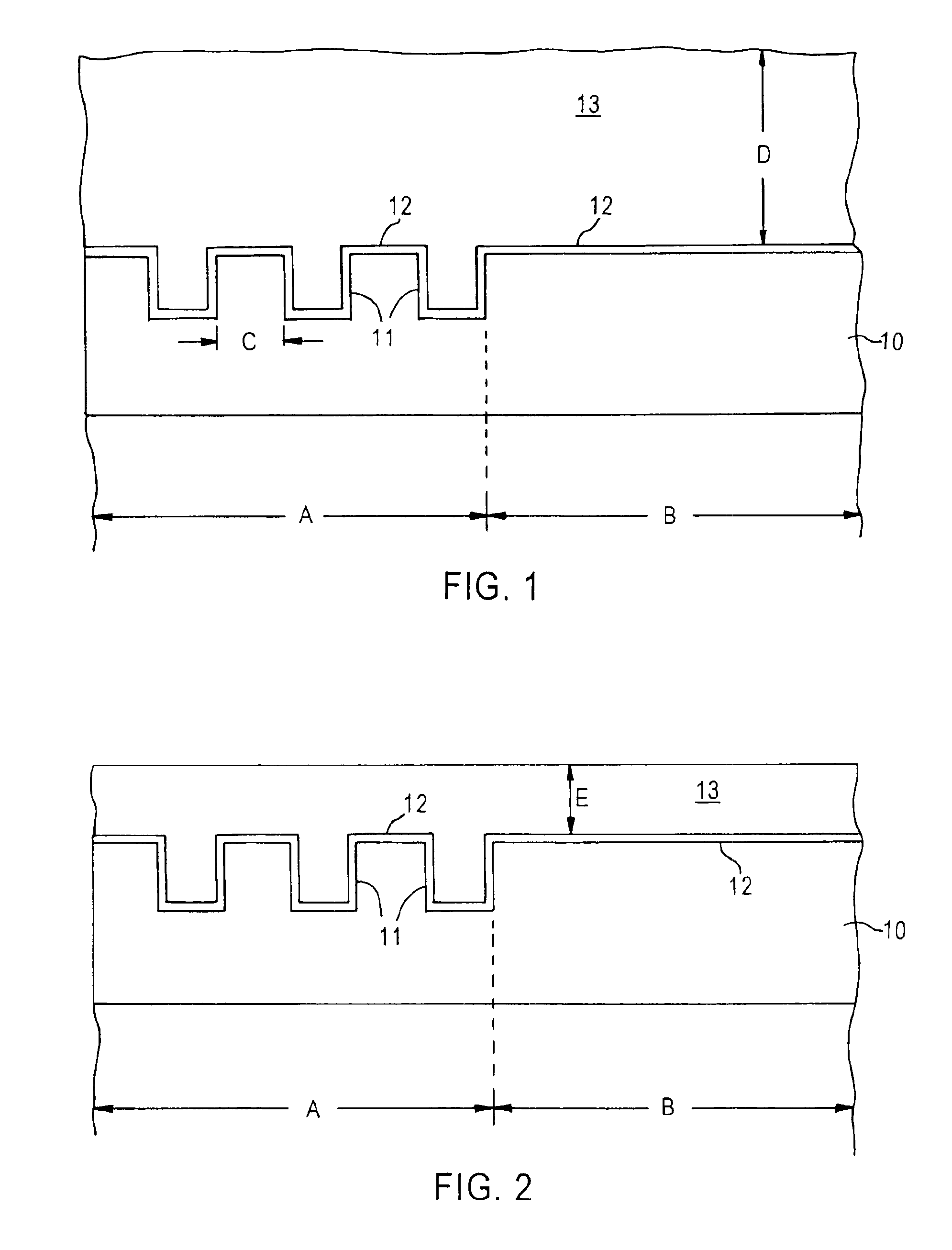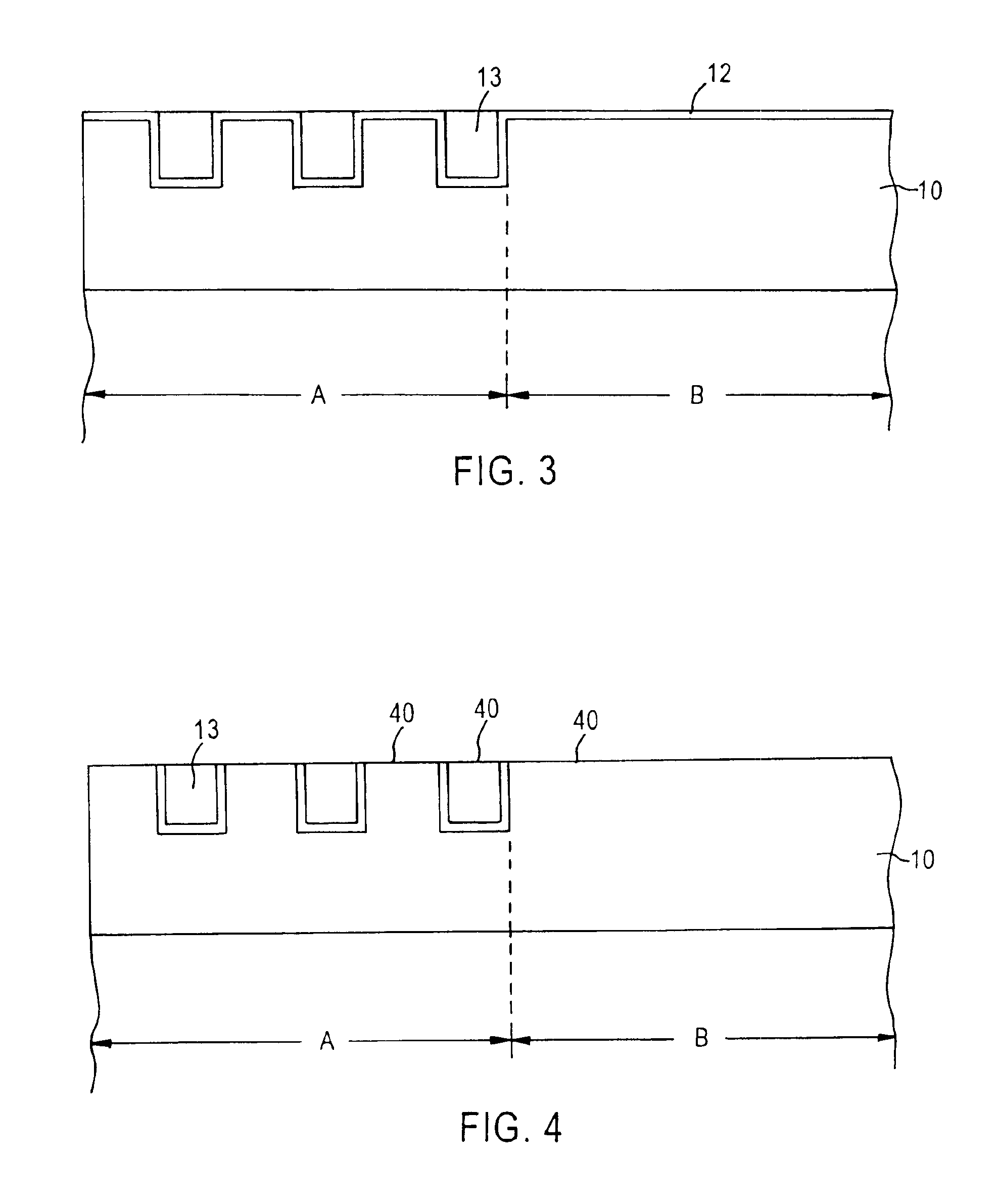High through-put Cu CMP with significantly reduced erosion and dishing
a technology of cu and ccmp, which is applied in the direction of chemistry apparatus and processes, lapping machines, manufacturing tools, etc., can solve the problems of difficult to meet escalating requirements, difficult to achieve a high degree of surface uniformity, and difficult to meet them, so as to reduce erosion, reduce dishing, and eliminate erosion or at least significantly reduce the effect of erosion
- Summary
- Abstract
- Description
- Claims
- Application Information
AI Technical Summary
Benefits of technology
Problems solved by technology
Method used
Image
Examples
Embodiment Construction
[0020]The present invention achieves the heretofore elusive objective of effectively planarizing Cu metallization at high production through-put while eliminating or substantially reducing both erosion and dishing, consistent with the ever increasing demands for reliable interconnect patterns having feature sizes in the deep submicron range. As used throughout this disclosure, the symbol Cu is intended to encompass high purity elemental copper as well as copper-based alloys, e.g., copper-based alloys containing at least about 80 wt. % copper.
[0021]The objectives of the present invention are achieved by employing a strategic multi-step process comprising sequential CMP steps by fixed abrasive polishing stopping on the barrier layer with no or significantly reduced dishing and erosion, using one or more rotating platens with a polishing pad mounted thereon, or one or more linear belts. Buffing with an abrasive slurry can then be conducted to remove the barrier layer. The multi-step me...
PUM
| Property | Measurement | Unit |
|---|---|---|
| wt. % | aaaaa | aaaaa |
| pressure | aaaaa | aaaaa |
| pressure | aaaaa | aaaaa |
Abstract
Description
Claims
Application Information
 Login to View More
Login to View More - R&D
- Intellectual Property
- Life Sciences
- Materials
- Tech Scout
- Unparalleled Data Quality
- Higher Quality Content
- 60% Fewer Hallucinations
Browse by: Latest US Patents, China's latest patents, Technical Efficacy Thesaurus, Application Domain, Technology Topic, Popular Technical Reports.
© 2025 PatSnap. All rights reserved.Legal|Privacy policy|Modern Slavery Act Transparency Statement|Sitemap|About US| Contact US: help@patsnap.com



